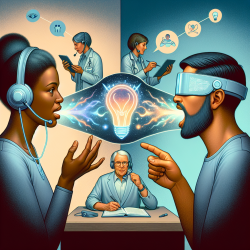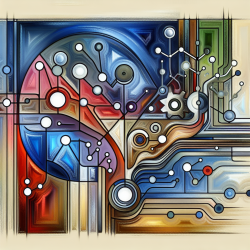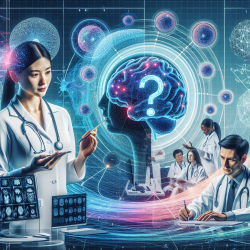The intricate relationship between language comprehension and imagery has long intrigued cognitive scientists and speech-language pathologists alike. The study "A Study of Imagery in Sentence Verification with Adult Aphasic Subjects" by G.A. Davis and C.W. Hess explores this relationship, particularly focusing on its implications for aphasia therapy. This blog post delves into the key findings of their research and discusses how these insights can enhance therapeutic strategies for individuals with aphasia.
Understanding the Study
The research by Davis and Hess investigates whether the right hemisphere's capability for imagery, especially visual imagery, can aid in improving language functioning in the left hemisphere, which is often damaged in aphasia. This question stems from the observation that for many adults with aphasia, the right hemisphere remains structurally intact, potentially offering an alternative mode of communication and a resource for language function improvement.
The study compared sentence verification performance between high-imagery and low-imagery sentences among aphasic subjects. The hypothesis was that aphasic patients might verify high-imagery sentences more accurately than low-imagery sentences, leveraging the right hemisphere's intact visual imagery capabilities.
Key Findings and Implications
Contrary to expectations, the study found little evidence that imagery value significantly influenced sentence comprehension accuracy in aphasic subjects. This finding suggests that the right hemisphere's potential for supporting language rehabilitation through imagery might not be as straightforward as previously speculated.
However, this does not close the door on the potential therapeutic benefits of imagery in aphasia treatment. The study's results highlight the complexity of language processing and the need for further research to understand how imagery and language comprehension interact in the aphasic brain.
Applying Research Insights to Therapy
While the direct impact of imagery on sentence verification may not have been established, the exploration of imagery's role in language processing is invaluable. Practitioners can consider several strategies to incorporate the insights from this study into therapeutic practices:
- Enhanced Multisensory Approaches: Therapists might explore incorporating more multisensory stimuli into therapy sessions, including visual aids, to engage the right hemisphere's processing capabilities.
- Imagery Training: Encouraging patients to visualize concepts or actions while engaging in language tasks could potentially strengthen neural pathways involved in language processing.
- Further Research and Development: The findings underscore the importance of ongoing research into how different cognitive processes can be harnessed in aphasia therapy. Practitioners should stay informed about new studies and be open to integrating innovative approaches based on solid research.
Encouraging Further Exploration
This study serves as a stepping stone for further exploration into the complex interplay between imagery and language processing in aphasia. Speech-language pathologists are encouraged to not only apply these insights in practice but also contribute to the growing body of research. By experimenting with and documenting the effectiveness of various strategies that leverage imagery, practitioners can play a pivotal role in advancing our understanding and treatment of aphasia.
In conclusion, while the study by Davis and Hess challenges some of the optimistic assumptions about the role of imagery in enhancing aphasia therapy, it also opens new avenues for research and practice. By embracing a nuanced understanding of the cognitive processes underlying language and imagery, therapists can develop more effective, evidence-based approaches to aphasia rehabilitation.
To deepen your understanding of this study and explore its implications further, please follow this link: A Study of Imagery in Sentence Verification with Adult Aphasic Subjects.










